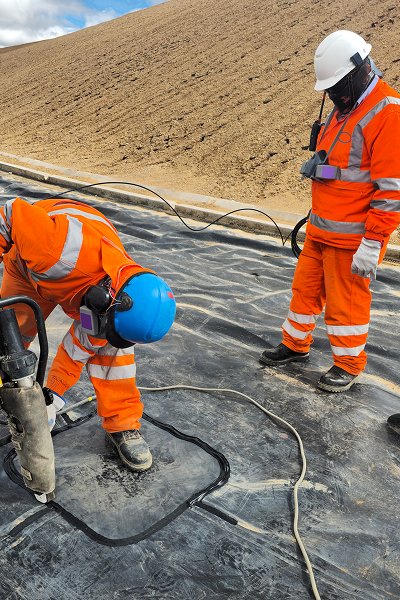-
Geotube
-
Geogrid
-
Nonwoven Geotextile
-
Woven Geotexitle
-
Nonwoven Geo Bag
-
Geosynthetics Clay Liner
-
Anti Grass Cloth
-
Plastic Grass Grid
-
Drainage Board
-
Adjustable Pedestal
-
Composite Geomembrane
-
Tarpaulin
-
Drainage Cell
-
Road Crack Sealing Tape
-
Geographic Grid
-
Geomembrane welding machine
-
Three Dimensional Geomat
-
Composite Geonet
-
Asphalt cold patch
-
HDPE Geocell
-
Geomembrane

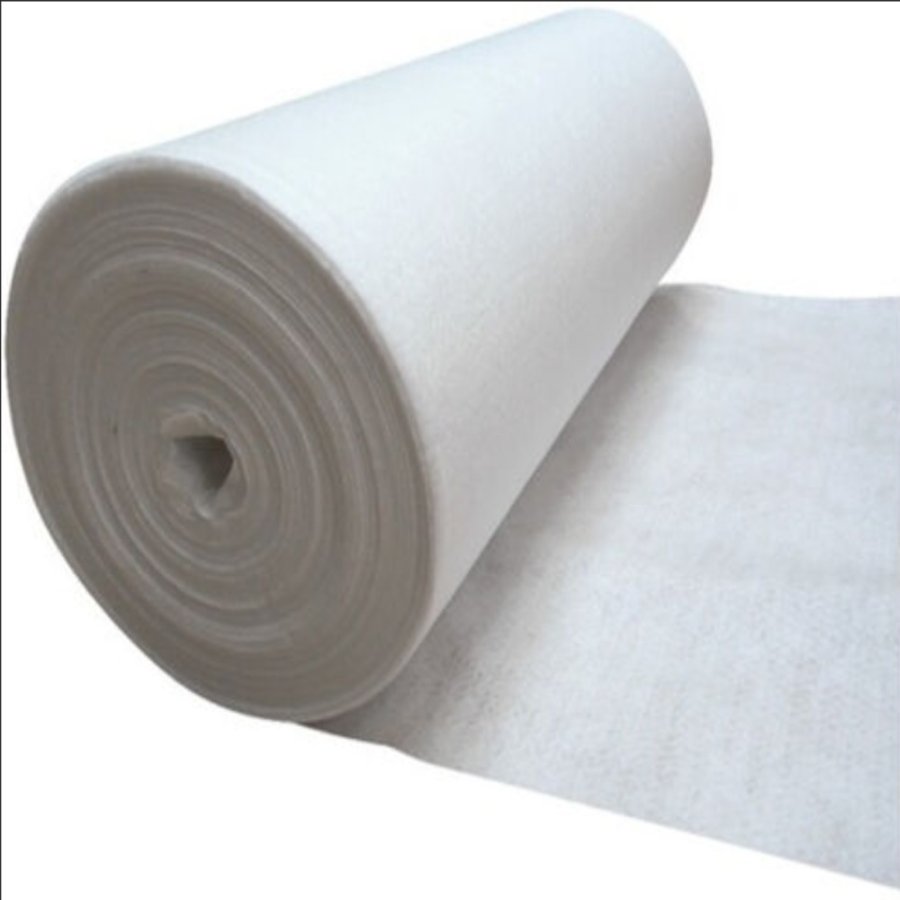

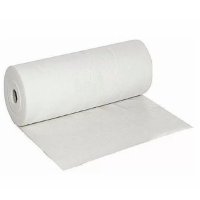
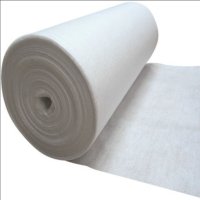
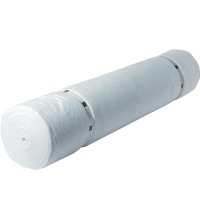
Composite geomembrane is a geosynthetic material made by compounding geotextile and anti-seepage membrane (such as HDPE, LDPE, EVA, etc.) through hot pressing or coating process. It has both the strength of geotextile and the anti-seepage performance of geomembrane. It is a commonly used anti-seepage, protection and reinforcement material in modern engineering.
One cloth and one membrane (1 cloth and 1 membrane): The upper layer is geotextile and the lower layer is anti-seepage membrane, which is often used in anti-seepage projects with medium requirements;
Two cloths and one membrane (2 cloths and 1 membrane): The upper and lower layers are geotextiles, and the anti-seepage membrane is sandwiched in the middle, which enhances the tension and protection and has a wider application;
Multi-layer composite structure: More than three layers or double membrane and double cloth structure can be customized according to needs.
Test Properties | Unit | |||||
Thickness | mm | 0.75 | 1 | 1.5 | 2 | 3 |
Density | g/cc | 0.94 | ||||
Size stability | % | 2% | ||||
Yield strength | KN/m | 11 | 15 | 22 | 29 | 44 |
Break strength | KN/m | 20 | 27 | 40 | 53 | 80 |
Break elongation | % | 700 | 700 | 700 | 700 | 700 |
Tear resistance | N | 93 | 125 | 187 | 249 | 374 |
Puncture resistance | N | 240 | 320 | 480 | 640 | 960 |
Carbon black content | % | 2.0-3.0% | ||||
UV resistance | % | 50% | ||||
Performance advantages
Excellent anti-seepage performance
The film is made of materials such as HDPE/LDPE, which has an extremely low permeability coefficient and can effectively prevent water, oil, and chemical liquid leakage for a long time.
High strength and puncture resistance
Geotextile enhances overall tensile and puncture resistance, suitable for soft foundations and irregular terrain.
Good chemical resistance and aging resistance
Acid and alkali resistance, corrosion resistance, strong UV resistance, adaptable to complex environments.
Easy construction
Can be hot-melt welded, reliable overlap, suitable for mechanized rapid laying.
Good flexibility, strong deformation adaptability
Still maintain integrity under uneven settlement foundation or local deformation.
Typical application areas
Landfill bottom/top anti-seepage system
Artificial lakes, landscape pools, reservoir anti-seepage layer
Sewage treatment pools, tailings dams, sludge pools, leachate pools
Reservoir dams, channels, water conservancy projects anti-seepage slope protection
Subway tunnels, roads, railway soft foundation waterproofing layer


Customized service:
Specification customization: Different thickness, color and other specifications can be customized according to customer needs.
Packaging customization: Different packaging methods can be customized according to customer needs, such as roll packaging, pallet packaging, etc.
Shipping scenario:
Logistics and transportation: Use professional logistics and transportation methods to ensure that products are delivered to customers safely and promptly.
On-site guidance: Provide professional on-site guidance services to assist customers in product laying and construction.




Supply and service
Supply form: coil packaging, width is usually 2-6 meters, length is cut according to customer needs
Customized service: different weights of fabrics, thickness of waterproof membrane, color (black/white/green), anti-aging formula, etc.
Information accompanying goods: factory certificate, technical parameter report, construction instructions, welding proposal
FAQ
Q1: What is the difference between composite geomembrane and single-layer geomembrane?
A:Composite geomembrane is a composite of geotextile and geomembrane, which has the functions of "filtration + anti-seepage + protection", while single-layer geomembrane (such as HDPE membrane) only has anti-seepage function. Composite geomembrane is more suitable for engineering scenarios with mechanical damage risk or tensile resistance.
Q2: What is the difference between the common "1 cloth 1 membrane" and "2 cloth 1 membrane"?
A;1 cloth 1 membrane: light structure, low cost, suitable for projects with low mechanical protection requirements;
2 cloth 1 membrane: two layers of geotextile sandwich the anti-seepage membrane, with stronger puncture resistance, more suitable for complex terrains such as sharp particles and soft soil foundations.
Q3: Can the thickness of the membrane or the gram weight of the geotextile be customized?
A:Yes. The common thickness of the film layer is 0.3mm, 0.5mm, 0.75mm, 1.0mm, etc., and the common weight of the cloth layer is 150g/㎡, 200g/㎡, 300g/㎡, etc. We support customization of thickness, cloth material, color, and width according to project requirements.
Q4: How to lay the composite geomembrane? Is welding required?
A:The laying should be as flat as possible to avoid uneven tension. The film layer of the composite geomembrane needs to be hot-melt welded or extrusion welded to ensure the impermeability of the joint. It is recommended to use a special welding machine and be constructed by professional technicians.
Q5: Is the composite geomembrane resistant to acid and alkali? Can it be used in sewage pools or chemical pools?
A:Yes. HDPE/LDPE membrane has excellent chemical corrosion resistance and can be used for a long time in the range of PH 2–13 without problems. It is suitable for sewage pools, sedimentation tanks, chemical tailings pools and other projects.
Q6: How long is a roll of composite geomembrane? Can it be shipped overseas?
A:Usually the coil length is 30-100 meters and the width is 2-6 meters. We support international export and container shipment, and provide customs clearance, fumigation pallet, packing list, certificate of origin and other services. We are widely exported to Southeast Asia, South America, the Middle East, Africa and other regions.
 0.5/1.0mm Composite geomembrane
0.5/1.0mm Composite geomembrane
Composite geomembrane is a geosynthetic material made by compounding geotextile and anti-seepage membrane (such as HDPE, LDPE, EVA, etc.) through hot pressing or coating process. It has both the strength of geotextile and the anti-seepage performance of geomembrane. It is a commonly used anti-seepage, protection and reinforcement material in modern engineering.


